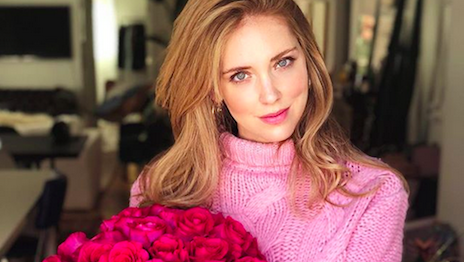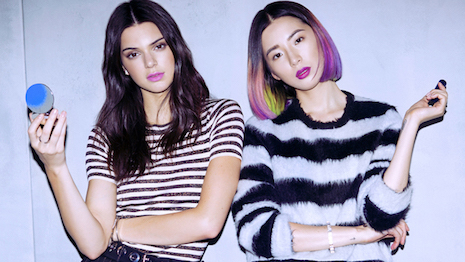More brands are turning to influencers to authentically connect them to new audiences as influencer engagement increases, with more room to grow.
When it comes to influencer marketing, brands face concerns dealing with selecting trustworthy influencers and measuring ROI. According to a webinar presented by Shareablee, influencers drive an overwhelming 72 percent of social media actions.
"The reason why brands are looking to partner with influencers is really because they're providing a brand with access to new audiences," said Tania Yuki, CEO at Shareablee, New York. "With an influencer, you get tactics like creative development.
"So they know their audiences and they grew to these audiences because they know how to create specific pieces of content that really resonate with the users who follow them," she said. "So in partnering with them, [brands] are getting to use their voice."
Engagement insights
While engagement with U.S. brands fell 0.5 percent from 2017, influencer engagement grew 2.6 percent.
Eighty-three percent of social media engagement occurred with an influencer, numbering more than 122 billion. The ten most popular influencers alone have more than 242.6 million followers and drove 1.2 billion social actions — a like, comment or share, depending on the platform.

Chiara Ferragni's partnerships have included Lancôme. Image credit: @chiaraferragni
Despite social media networks Facebook and Instagram investing more in video, photos still represent the most popular type of content on both platforms, both in terms of amount of content shared and engagement level.
Each type of influencer presents brands with different pros and cons. Shareablee categorizes influencers into tiers based on their audience size and availability.
For instance, there are only hundreds of celebrities with more than 20 million followers while there are hundreds of millions of "micro" influencers with followings of 250,000 and less. Celebrity influencers and macro influencers — who have an average audience size of 2 million followers — create 43 percent of content but drive 96 percent of engagement.

The Kardashians feature heavily in a recent Fendi campaign. Image credit: Fendi
With more than 180,000 posts of branded content online, brands need to be selective and work with influencers who are authentic, trustworthy and engage with their audiences. These traits also need to coincide with campaign goals to make the partnership valuable.
Nearly half of those surveyed, 42 percent, confirmed they tried something recommended by an influencer and 26 percent made a purchase. Influencers especially made an impact on younger adults ages 18 to 24, with 48 percent making a purchase inspired by an influencer.
Influencer evolution
In addition to working with traditional celebrity influencers, luxury marketers have increasingly been embracing virtual influencers as ambassadors. However, the use of these computer-generated models tends to drive more attention to their novelty than their brand partners.
While virtual personalities may be more cost-effective and eye-catching than their human counterparts, they tend to lag behind real influencers in driving brand goals such as awareness and engagement, according to a new report from Fashionbi. As luxury brands seek newness and differentiation, these personalities' lack of authenticity and transparency may hold them back (see story).
Beyond celebrity influencers, micro influencers and even more "everyday" individuals can still have significant sway on consumers.
Sprout Social found that 61 percent of consumers would be apt to look into a product after a friend recommended it, compared to only 35 percent who would consider a purchase after hearing about it from an influencer. With consumers responding more to their peers, Sprout sees a big potential for the budget-friendly tactic of using a brand's own employees as influencers (see story).
"We're still at the beginning of really being able to leverage influencer marketing on social,"said Ann Sciandra, product manager at Shareablee. "This area has not reached saturation yet and will continue to grow."
{"ct":"YLIiYt8nRrr6H7UHAl2dJa99bU1+0pcVRmhfeytVXfFIOMkTyDUMbMWod1oTPP9sU9+cUN3zQt9BaNMDOyCB6wLLoid7qs7b3VlxrqHhfHuhizKxjdzr87w333+eB3Bq1CNqhjhclhEoXGD3EQZ27skoqX0KqeEZrCSG+bU53TwaxIk8FXvapiCs1wyUtT0blnQiY2PHyS9HGk5tfk2M2ddkvaRxAdzBumEl1BPxyoj1K7MC77SJpUERCB39f+FPelt5d2zWGEp0c68iaLaO9lzvImmNpoGBZPJzH6U8FwShUAk6otbSNJxRl0D5nAl5f4PrzQbMUahXUAUX6fZaNXL3Uj1+ujldTSD\/Z9ieAUYa\/6AW\/4Ungoc3WAlrhppNlWYcWsNXqKHULL1n3LwJi4VqiBh1BOVma9DcBZm6LH+ISk5yQVz+DeHyQfyKzo83ZkCYytE\/zP5Bjzl+tj3lX7HmISst3qwgy9Oy+w77\/l5xjVh3bRFCOJ\/Vqxql3sb1hQpQP1ObwoSTjjYz2bvjnXTKdoFxsd0y0srf\/DpJLWSCbP96wHxAddVlc80bm6iYQYRyp8iTAjPhoV0kbpNlpb9CXBBNIfVmfRBIhytfe3wze1m3v7IiADAIEHJ+FrwQofNglWWJEuZ9WOwiriMlsX5a+JcVD1qtn8+AE766lws+4wYy+xElvKZtxK2bExSkPpuLWqkoUfYX0i6Nc0YJV0ycOwMet5ou5\/EMS4aUFh8RV8AxokCfvF8JYazwk6mYNEvb8LiwYxGIotsNaEwSlNlT9eaP1MGdEUVj0PJH4mynqMqWCSwLuQRvPQphNFKwmCc4K3L5Tbr5HwzF0nAkZJhf0uGv0RS7+tmFiOPTiih7LgQiCmQfPSvjdqQ2zj9qneieFx8u3nii+9DtWPOh3PlvlTaeThfrVNjy\/TIfosM+3qgmy+yt7a5oxokGTSwFObz4EyRZSrri4r45yhloSZs2DgLA3Zb6Js6e\/vf0LA5DPRw6B6BklOUQyCZjfA5I2AcNJnKA80nkWiEumwWXYjTf9QpfiBwXliSK+hNWid772fA+TaNfjH7qnCORDKB3dWBY+qkcD\/zP\/CuJkhe0+mDheDyvsY0OMLqEGz6CRT9BGJmADNBa6LZ38uvqS5T\/rm+\/28i8IsNPQmipOAK1sExeUZHemF+QAdeLPft2oUYYzO84MiF2kScDYIKBWeEql9lGAioDUkUpypLLCWiXPYBmTnAZa\/qmTAX9FxAid3GI8\/htVqntmnt8yYKcZ27mQNqo6SiYbZqfA8PN4VIqJj3z+xWL8MKNPAKTPQ+Q3EDm0+GyBYz7R\/RsZTT5i\/WWk54JFEfIjhXPYF9i8qA2W8PIXsWX6qDrNcb9YARVG9XA9+64l3Tz7AWlG03kAok91uuncr4IQ\/UoTEPEI7FbB6bUmcLiHLT3JkI2RCjT2EYDMOJZX9twaDQ5TDkt2ptHzz6s4mn7qe\/PyPvOji4rBP4vbgO0iJA\/I5mWjRfb6B527wet0LULXIlmZF\/tMTGtffD84eQujzAxEXxXIVXf1laVImz\/b1i4mSju8PFlUOc+r9A3Z8q5X+Cj5aFe1khCOCBcKktgK+xrc2\/j4NPIGxIftJ6uHowJ78QUKsrWqXJ0SWnBXw7NHuN1CqrM\/KDNCzdSYfMVVWTojRzyyMOxeS+Rd58RedeJyLPUUm\/3aaxMNieLewQkVkLwmImRUQy0XEz8Sh\/bVN\/FyQ+p2Kqjx8RYp\/U7mDaBUqWYpBIk\/Py5QOBQw7BzdzqNv\/xkwJA5XCTz\/0gTuzIJ2QgIQeWejVCBEgtbzmMEYoLX8SO6QDSmWmCbR8yE0OkACPmdWOFkiEoI6xvDlNPwpZtOEIuB+LG3Vhc6NSX5sI9LTwFOc5ACb2flvEQX1bedtFLQ1a3Z172upC5lUdxj8fTxemEKkHSvbflkM38u33HW4iNADn5rM9DTKArNNe+l11XWlrwypskc5OCHZcH4OAxNFbzD\/PHHSsPQ1tdwLeRC0FyABrHCyOMiuWxQE95TIy5rPl6dB0Hvr1VN7\/3SABcTtj1NtzZbXPbnGrzaWJ04ZhGPF5vPG7NLG+VXO822v3ahlFYqj7wLNpDnCqBw6DLdbRGMJSMcdRiFynuvw502yo47cdCh0BieMs6CEaJl9bttE7kKKq5M1lDI2r\/iRQB9bMvUjSQy8AwD34lF+eGuiAbnnLN4napViGQSBXPK2n7CwOiJihA2V1AZMTLXlcS8tEhphdwb\/kjrTQldY2E1BKgdoftHGf09M\/rQlBhIwkPRyROGU4CRUzKZJUuRXPC8GHSGXYMhMv4XLo8Nl5NtJIAoitoaTOUEaugP2AewC7yShVJ5KhH\/ck+cp9MQgV99yjqfzKRDPXmcN00vnZGG8u666r1ziWBpZ0i1VB1yvLUIa+yd138B35CFOKGOXc2eLdkoGKbG4rR5pwUhozCxUzDPrNdTykwyVieiSm4jA+u\/wPzGXx9M7pf+XhmlKXAIOL993sRUsekP59GC+oMLByU\/0HkvCtk7d4cT4WZiuCnu8qrj5bCYqnOB8PP8SBYDQZsTNrQXTypmGe6Je\/vmOxx5lkPH8SMCOGaQtOf8mAGZqPFCwUJlx9IQUHZgPpHWWI\/zRbXvccpX\/fIoiAwGSOiZme55I+OUsJmt9owTUKIbqSBm8ry4JPjaBsiCUB0alPtkKT5hc8NCp9KYU9NsYRYq1Rf\/roQewgUtDY+uYburoNDDl2RmYZuSbdxW9smRh7rIgaXu\/R6RidWh8bfI+ZYbP4\/\/xeTUyNPVIbbnVUQ\/HdMnRvxpwfYqA5LASoCIwydS3ZGlOh0uQlrZSCKkB2OZbSyr9zYlsLhUmT\/CLFrWddFm4z+Xi4OiKSa5\/L7jOsasIk1RmfAzIq4ENFb1n6namKff+6AGzszc2IsaEvE24A+C2PpkWf332gDoB2BZGFCXYpdH+vRo1s27p+ekcQfFdPDdYaGomVIyhz4CWZNMl96wJ8gwfqFExdcCzoqdCFkNuNvpVoREXB5PHMOICKSKpmL8dJJ5t82cvxx2mnSbLWxJIwS3XPRk\/EHHEtlD5GZOsfXSAyK7CEirLqFkvCAiu11289nk16dpHaAljtZ0qyADeBV40HjJqLAQjz7Vptw0D\/X2Na+0f8MYFKLx7r+WpItCQqqpTPozzapetfcPwPTKv\/vApu+z+kKPO+uhaZUCiRWPTe9O9coCyR7jU2WsXqcv6NYUui\/AvXdbYnewlw+sDD\/5kgnszzdijxxRk8stHkcYrSykBxpPipIUYPxD5wgFKnRoVzp1JqgGDuUrlCgwjVi85wAH8vcuVsV03yszlGJoWBOuT0Zkvkgx2rsv7clhT44S4M5j2TATlqFzeIb2P\/gQTt9fkFJmKO2YpVDkRAo5ezWYP\/hTNJ68PGpupNJCLrEDpC6gCiaNRC7LUwmyr8NQSbVk2Obq9aIYRR2OELmCbr67vTQ8WSPOqbKrtrSQxTxAphzPCjJCszVaBhRlj8V8hEkAO2RJ1GCU9nkrsUValzB1ClVIie0chuY37h0+WYCvNQAfV3x0mRf\/hARw3tt7DF9JZi\/cmkE+UgoXLDf0nMfTML9H8oGlnwr5TptMogm0dcqjzNoqaIFTx8W6SSO9xEuGmHBowdb4LR3VM4Q+g\/N1rQkOMs\/3o8KPqnzoKOAPttYCzWCt1g5MVodVvbFXALHsK5wsScQaJoGwMsKH8xUCXABVxJUd8szmZ+KaqDzmX0HQl+wR+0ztLORtIYGUVg+BiitWeeapV1e8gfPQsESQuPvdQAtylSMD7sp8nWVyfQsnl4k4gC3CRMybAxRAC\/BuE9d6kT\/8r+a+so+zFYGNeG24X9cdLjLsA\/M8FPvwjPdKDhtpcnYsnuvNLUxuDNZKdOFt3zpGJQBjZYaxjwx1zJ3ps1ElxZJn0RM1d5b46W0tLxnRXcI0xAJORRm89iYz2dbOMDAx9dAtcOAveYG5GHER0obhnPcUt\/rjhEFlBuwBQVcsNJHolX7ogxZb0bkV7wRpdQuil9p395Y8LkCFxc2mXmYXgpmhyt8kDAFskf7MQFoim8AeVQmrkY1Hui5paEQ1gv5XFmShRLw+agHXdm3wDVrfcfP8l5RFSylZAmzDo9MDO0HO\/xwmTSwVEKFC6+gXcpc1vhurAlYX5Il0ZMWc0RPhU414by0u+aRpXf6zO\/t6Xy3N+MzrFzBsjz9NXyuu6dsgEkFAHCeiI4XUfhSPngi9\/iUQ7RstnHEBA3YJn6tFiLpk3VqG9bey017\/o18SsXMJUwCKWavX9AL9Ue5pVAMW9YEQdEVDHNwC0kG7hzT\/Oh27pQPb6NWxSDn0ZPNOGyZupVlugzVHQtTfcZkLENn4kPUMNu7c+RR8Hb\/FKyWFnI49BZ5aAa1bW9NUfmLcamrNnBFHekrLgeBlQXbt7jOS79XOAyCq8m+\/Fzg4\/tZs61YxvDS1gGLg0SGNw4s1FYCTLSG\/I10Zv2Fm5HEPGwLaorsWveUgplDtIayymeQzzQEJz136Wt4F3fms6M6FwJdFmgrzj70wYQKlyiVTYlROEQTiFTveBl+yK8MqTomlgwSfcSSro\/kpfedqDkGHJD9UBUkHo3EySJW87wqvZSqZjRMfoUUc0N1Tj+dAZ\/XZoL1s1k0hJsT99DMYI\/kna6F5l+3A8RDNu8AqMYCwGOFEC0nQKFMcOw+LAw47AI95ogTxfog6yDsOY691XJ6Pfa4m5T2mNm5w3WSdfwRnXdiox+rAFEPBoompeHiuN4bdt1B5GWZ7ffQySgJxvnwyM4UMOCfdpFWLFSNrV9opRMBtD+pHXbbB4FuH+gA1ew2bxR+TpC88iy6AaDrxyxqCrqyWAb3fAlhjdizwJilwmr2TlsCq8ar+q9i2x4SXkGRTz5oXHwcR\/akuoQin3CZOqW\/J9\/\/NuT7zEwJjCHaW5\/nsS0Xl\/mK387zg\/Gk1cE3n+avbv5P4eTNzK1pCDP5clLtkKWz3AjncgennpwGFvaLERFhOOoYptApVLHFK6GIfzDFizh\/VxcYSeIwn0T6eaFeSRb9qvz1aZ+0xQjd7p9xQ+RBFC8ZN5wktMfq1FeBwgnlLYFzh7etLb8PMUMMsROBx9inxgwReFQETx7BVbkbE60bMyuf1dHSMcPDfMp8loJ8+uomOKtyucNcpqoCV8CNq1cqcUsVGnxJ4ucb43vxhnVHxxE5XF402L8bXS\/RuqXeJFntOWB7quO5zsVqW1PvzkFs8gxhmBW\/RlYtadVejDZakuRYMXPlxaYladUNdzx1uy0PYO4xyDbISr9VuTERWAfReSzCjMHUTFtVC8dfcEistoq9t6DUCeuaYLTs6\/4KUoJv\/LhprLBYvghoXvrlVFPVhu1S4HmuHaS1OS\/qdaHf2R4YDg4Xru6VlbJwocW3ngN0DlbyT94TbNbzbM0DSrWbCOgKYRLeH8BZMiwdBWTHUnTQOW7IbKaKbBqGYrCHDFgbLzRMbWpcb9\/udYAs3s4j1+amZ3RvY3n0QrhvRZoYJr0mpxxDFe+GpiEPMkJrV0fcx346QRRTEOVm4vpGUinHcLJxPggGJ6ENP87aEJ5FV\/fLsW3J5tmE72bDTUt0odhoOhvV8puqfvTJnOG1D9p\/12vD5zfgJ\/G3zYWirUDIw7cD\/rjfhpQMzqvRl+A555gPH8we1VqqZF6puZpHGQUZaQF+BTFptiAikLlcFij7rNlHYBLrl3ZiTRnPY1G17QZGiWAKZVpxUQPJvkhyUp5WGT50xAZfVW6zkTK7NYXyc\/MHfU429gZy8nFZXFBgO92\/8RBkwGaYxTFccXTkii6FiIbnBsvDMfI5KBd+Jz7efGg0bkVXtYhh9GBdnNCfJcMa2P4fvf3rLvKezZotXcaXYiFKA+C66SFxzVCgfRZtGKbdkni\/Eg\/c7koAV9iloRtYjny8a7B6tFBjZ97gBlnwDEpZ64bBoTCFKIuewt2WeivzEfdAdIoeLhL4Yf1bhWfCKD7CiwDz3lNjoeGQDBPsPEtpitA6jz8DWf2uae3cDLHmhFd5Kbb09bser14rLrpw8P+7uLjcRYRw0pz8\/wzN53wW2tKBEYWV0vr\/6Gic+kJiw0qkPwQwL1KXJKomW0V\/V+fFX+g79UMl6OjbIojeRojQiJv6rHjfEgZNy517KsQnuNGQa7N9Kmn+FCXTbDYedKMGiNK3UeJiyHVjZYN+Hyej3o7akqhULnNfp28TiZEZHtmeug9IwvUK5my1WA36i4SwmVfGH3eBWp0Hbxn\/MzLP1sB9ApnC+Kdris8+mO7kQuSSGsfuL9SjHVsDOGfAGYdpwTBM1kE87Tm5W2Txt2fc7CnxUMUPGdeD\/\/CMPVGnyyMtY7QZE86ZFby3i2VBlBMVRutYEJcNp4hvQB8tYC0xVUgfK+taX5pkMC9jhx\/7pusRU2cYx\/uJlUkYe2bTUEQhmLFfIw0aOQ3ULtvQPtZzD4HAd\/HxIu6NkjepXaVb\/ppy0WcJCUkiShtjCdfwyPqRwUcNBRwMOMrcRIwYEl\/76S0QgdBtNdqcY++XzmvZdVS9q4qtsICIdYqgECLyoT1aOpsHfELSO8eJUHGHfVWhOSa1AXkrWf3FYp7zRd5dv7MS74TMgpdC0QqkpZCu2fN\/pDm+TjUj4OgjeAAiHd5AJsjhTHBWVmp2du7XlzwEgboRj\/8epdeOdHqZVhlsz576uC01eGNIcT6lFFa3785QueYpjx9O7gvo8e2UZPIyUt6shf6Baxjtngl1TNhUVatrs4CZ0tGNQNBb5bV13oG0ArqOjBfth9iEG4gjJZ0tZcp1y4U8DAfvIWD2Vd5aKZoZCs35wubmzFHbDY1M1aGCk2pBeRNckLkXLXsPmvgL3hWuf\/dPNMD124B6lCTFcIAeGyoU+BYWb4IP4eIOs6btjBer1erlXLzJflE6hU1zetN2nmPgsBQWRT7nJG4oLd5vUAs6CkBgc2p9NWgeMbVE7hb4MsE+c4OEUy0ZHavT9\/zxlwdC689s1vRFH0lpvu6jV2HwhI0xVTueAxxkhTI19GyxFGwcw1MHheNbunQHwlUaenvIzQAh6UyIm+jcGHsOaNRVStvE60+D+IpAxyQERyWJ40ZkNUgnwWD7rimqkiC3xyeiV6mYmEQOgbiOPwWm4PsQ\/Lla+isP5rSDfHnsigN6g2Ja+6fm4j2Ibg7xGm+JWhpMI0sPrg0vMw02IYo7TE1RL5+mj1I4VIwsFvm9SP+VxOPCBjwFlkMJ2URWnLxPw0MM035uL4lOFeTmpDbNcWGGusdMyhiXIp6lz8tW1RQPK8ynQFC6w6AdAIUesBAgR1uMj1sbg6w4VPWE1","iv":"ae3ebd9f7335c206a384614d6314d464","s":"0e524b0d74466a31"}

 Model Kendall Jenner is a top driver of branded content actions. Image credit: Estée Lauder
Model Kendall Jenner is a top driver of branded content actions. Image credit: Estée Lauder